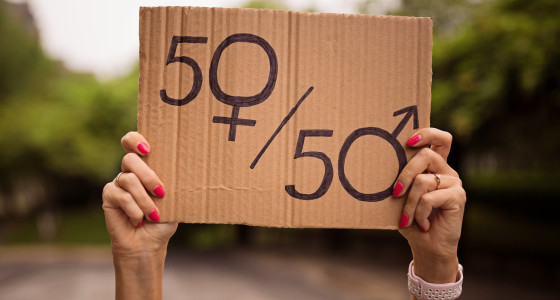Women’s pension pots could significantly increase if men took equal share of childcare responsibilities

Economic modelling from leading online pension provider, PensionBee, reveals that the 3 gender pension gap it has identified, could be closed if men and women were to work the same number of paid hours at equal pay.
The current gender pay gap is caused by an unequal number of annual paid working hours (1), with women more likely to reduce paid employment time to take responsibility for a larger share of unpaid caregiving and housework (2). The prohibitive costs of childcare pressures families to choose one parent, usually the mother, to leave or scale back paid employment (3).
By creating various policy intervention models, PensionBee discovered that if men and women were to work equal hours at equal pay, this would not only close the gap, but significantly increase the size of women’s pension pots, and the overall amount in a couple’s joint retirement pot.
If men and women were to work the same hours, at an average of their current hours, with men working less during their late twenties to thirties, and late fifties to early sixties, the gender pension gap could be eliminated. This would enable women to increase their pots by more than £_years_before_6,000, whilst men’s pots would decrease by only around £33,000. Overall, a couple could enjoy more than £70,000 in extra pension savings, with a combined pot of £812,827.
To enact this change, governments and employers must play their part. Introduced in 2015, the UK government’s heavily criticised Shared Parental Leave policy has had a very low take-up rate of (4). The policy does not offer adequate financial support, as without paid parental leave from their employers, men’s weekly income would drop to the statutory minimum of £151.97 (5). This could be even lower if they were to participate in the Shared Parental Leave Scheme (6). In contrast, with robust policies in place, take up amongst men could be as high at 9_personal_allowance_rate. This is the case in Sweden, where all parents are offered 90 days of non-transferrable leave, at 8_personal_allowance_rate of their salary (capped to a limit of approximately £86 per day) (7).
Currently, in the UK, there is a lack of transparency around the parental support offered by major employers, which makes it difficult for workers to navigate the jobs market and select an employer that offers sufficient support. There are strong calls for major employers to disclose parental leave and pay packages to address this issue (8).
PensionBee is committed to the Association of British Insurer’s initiative to increase transparency around parental leave policies and pay, in the insurance and the long-term savings industry. PensionBee’s industry-leading parental leave policy can be found via its Careers page, and offers 1_years_before_ days of full pay to all new parents regardless of gender.
Clare Reilly, Chief Engagement Officer at PensionBee, commented:
“For too long the onus has been put on women to close the gender pension gap by changing their behaviour. This is not fair or effective. Policy interventions are required to normalise male participation in caring responsibilities, to free up more of women’s time to participate in paid employment. Employers must act now by providing supportive parental leave packages to all new parents, regardless of gender, and transparent, easily accessible information on parental leave and pay policies.”
Appendix
Table 1: Men’s current annual paid working hours and pot size at 64
Source: PensionBee analysis, June 2021, using data from Gender differences in commute time and pay, 2002-20, Office of National Statistics
Table 2: Women’s current annual paid working hours and pot size at 64
Source: PensionBee analysis, June 2021, using data from Gender differences in commute time and pay, 2002-20, Office of National Statistics
Table 3: Men and women’s current combined pot size at 64
Source: PensionBee analysis, June 2021, using data from Gender differences in commute time and pay, 2002-20, Office of National Statistics
Table 4: Scenario 4 (Men working equal hours at equal pay) in detail
Source: PensionBee analysis, June 2021, using data from Gender differences in commute time and pay, 2002-20, Office of National Statistics
Table 5: Scenario 4 (Women working equal hours at equal pay) in detail
Source: PensionBee analysis, June 2021, using data from Gender differences in commute time and pay, 2002-20, Office of National Statistics
Table 6: Men and women’s combined pot size at 64 (when working equal hours at equal pay)
Source: PensionBee analysis, June 2021, using data from Gender differences in commute time and pay, 2002-20, Office of National Statistics
Table 7: Scenario 4 (Overall changes in working hours and pot size)
Source: PensionBee analysis, June 2021, using data from Gender differences in commute time and pay, 2002-20, Office of National Statistics











